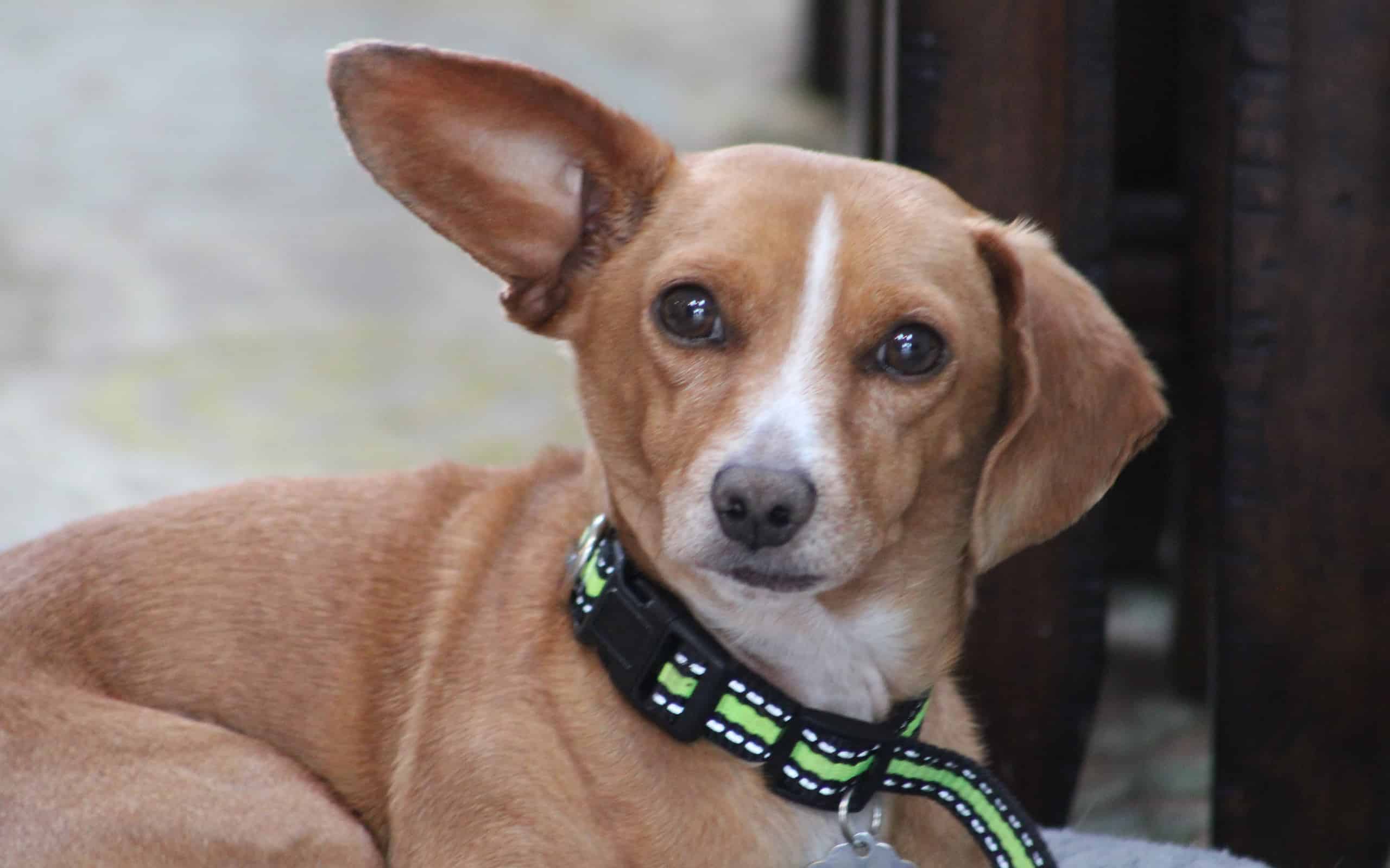What has four legs and two ears, with all the energetic attitude of a Chihuahua and the spunky playfulness of a dachshund? It’s a Chiweenie. This little designer-breed dog is still relatively new, but it’s sparking great interest among potential pet owners.
If you’re also interested in this breed, we’ve researched it and compiled essential information. To find out how big a full-grown Chiweenie is, read on to view its size chart, milestones, and other important information.
Chiweenie Summary

Chiweenies are not recognized as a breed by the AKC.
©Stacy Horner/Shutterstock.com
Mixed-breed dogs were once a matter of sheer luck. Fortunately, as more dogs are spayed and neutered, there aren’t as many surprise mixed-breed puppies born. Instead, we now have designer-breed dogs. Two or more dog breeds are intentionally crossed to produce a specialty mixed breed. Chiweenies are one of these cross-bred dog breeds, originating in the late 1990s.
A mix of Chihuahua and dachshund genetics, Chiweenies tend to make excellent watchdogs. However, their constant barking — like in both parents — may be too much for some owners. They don’t need a lot of grooming, but they tend to inherit dental issues from their dachshund and chihuahua parents. Overall, people love the Chiweenie for its playful and energetic personality.
Chiweenie Growth and Weight Chart by Age
| Age | Male | Female |
|---|---|---|
| Birth | 3 ounces | 2.5 ounces |
| 6 weeks | 12 ounces -1 pound | 9 ounces – 14 ounces |
| 2 months | 2 pounds | 1 – 1.5 pounds |
| 3 months | 3 pounds | 2 pounds |
| 4 months | 4 pounds | 3 pounds |
| 5 months | 5 pounds | 4 pounds |
| 6-7 months | 6 – 7.5 pounds | 5 – 7 pounds |
| 8 -9 months | 8 pounds | 7-8 pounds |
| 10 – 11 months | 9-11 pounds | 8 -10 pounds |
| 12 months | 12 – 15 pounds | 11 – 13 pounds |
When Will My Chiweenie Stop Growing?
Chiweenies are considered fully grown by the time they reach 10 to 12 months of age. Similarly, dachshunds stop growing at 10 to 12 months, and Chihuahuas reach full size between 9 and 12 months.
Full-grown Chiweenie males are generally between 6 and 13 inches by 10 to 12 months. Female Chiweenies grow typically between 5 and 12 inches tall by the time they reach physical maturity at 10 to 12 months.
How Big Will My Chiweenie Be When It’s Fully Grown?

How big is a full-grown Chiweenie? Adult size may vary in individual dogs.
©gvictoria/Shutterstock.com
The best way to determine how big your Chiweenie will get is to look at their parents. Half of their genes come from their father and half from their mother. One consideration is whether or not the dachshund parent is a standard or a mini dachshund.
Other factors that can determine how big your full-grown Chiweenie will get are the nutrition, exercise, and healthcare they receive. Feeding your dog high-quality food will help them grow to their full potential without becoming obese. With proper care, you can expect your adult Chiweenie to weigh between 8 and 15 pounds, depending on gender.
When Should My Chiweenie Be Spayed or Neutered?
It’s vital to consult with your veterinarian about the best time to spay or neuter your Chiweenie. Many vets and the AKC recommend waiting until your dog reaches sexual maturity before spaying or neutering them.
Chiweenies reach sexual maturity around 6 months of age. Many vets will spay smaller breed dogs around this age, especially females. Again, meeting with your vet is critical to deciding the best age for your Chiweenie.
When Should My Chiweenie Be Housebroken?
Small dog breeds are notoriously more challenging to train when it comes to housetraining. First of all, their bladders are smaller than the larger dogs. They tend to “fill up” faster. Secondly, they don’t quite seem to get that they should pee outside as quickly as their bigger canine cousins catch on.
There are several larger breeds who are housebroken by the time they’re 4, or even 3, months old. However, small dogs, like the Chiweenie, can take up to a whole year. Thankfully, there are ways to help your Chiweenie learn more easily and quickly.
- Crate train your Chiweenie pup from the time you get them.
- Stick to a feeding and potty schedule. Consistency is key.
- Be patient and positive while training your Chiweenie.
- Find out what motivates them the most — treats, praise, a favorite toy, or something else — and use it to reward thier outdoor potty successes.
When Should My Chiweenie Stop Eating Puppy Food?

While your Chiweenie is still eating puppy food, make sure it’s a high-quality food.
©il_moe/iStock via Getty Images
Puppy food is intentionally formulated for developing puppies. That’s why it’s crucial to ensure your Chiweenie pup is getting the extra protein, minerals, and fat content they need. While they’re growing, their bones, brains, joints, and eyes are developing.
Small breeds reach physical maturity sooner than larger breeds. Therefore, they can begin to eat adult dog food earlier. Being a small breed, your Chiweenie can typically start eating adult food at 9 to 10 months old. However, it’s always best to consult your vet before switching from puppy to adult food.
When Will My Chiweenie Start Losing Teeth?
Generally, your Chiweenie will start to lose their puppy teeth when they reach the age of three and a half to four months old. However, some won’t lose any teeth until they’re older — four and a half to five months old. Smaller breed dogs keep their puppy teeth longer than large breeds.
Your Chiweenie will lose their puppy incisors first. They may swallow them, which is perfectly normal and harmless. Otherwise, you may find tiny teeth on the floor. While your puppy is losing their puppy teeth, their adult teeth are pushing through their gums. This can be uncomfortable, so they may begin to bite and chew on things more at this time.
Adult premolars will come in when your puppy is around four to six months old, followed by adult molars by five to seven months. By the time your Chiweenie is seven to nine months old, they should have lost their 28 baby teeth and now have 42 adult teeth.
When Should I Start Training My Chiweenie?
Practice becomes permanent, so it’s crucial to begin your Chiweenie’s training immediately. However, before starting any training program, building a positive and loving relationship with them is vital. Creating a consistent and safe structure for their environment is also essential.
At about eight weeks old, puppies need to begin socialization. Getting them accustomed to their surroundings and to other people is essential. At this point, you can begin with impulse control training. As early as eight weeks old, you can train your puppy to do things such as sit before playing a game. Positive reinforcement training, patience, and consistency will produce the best results.
What Cues Should I Teach My Chiweenie First?
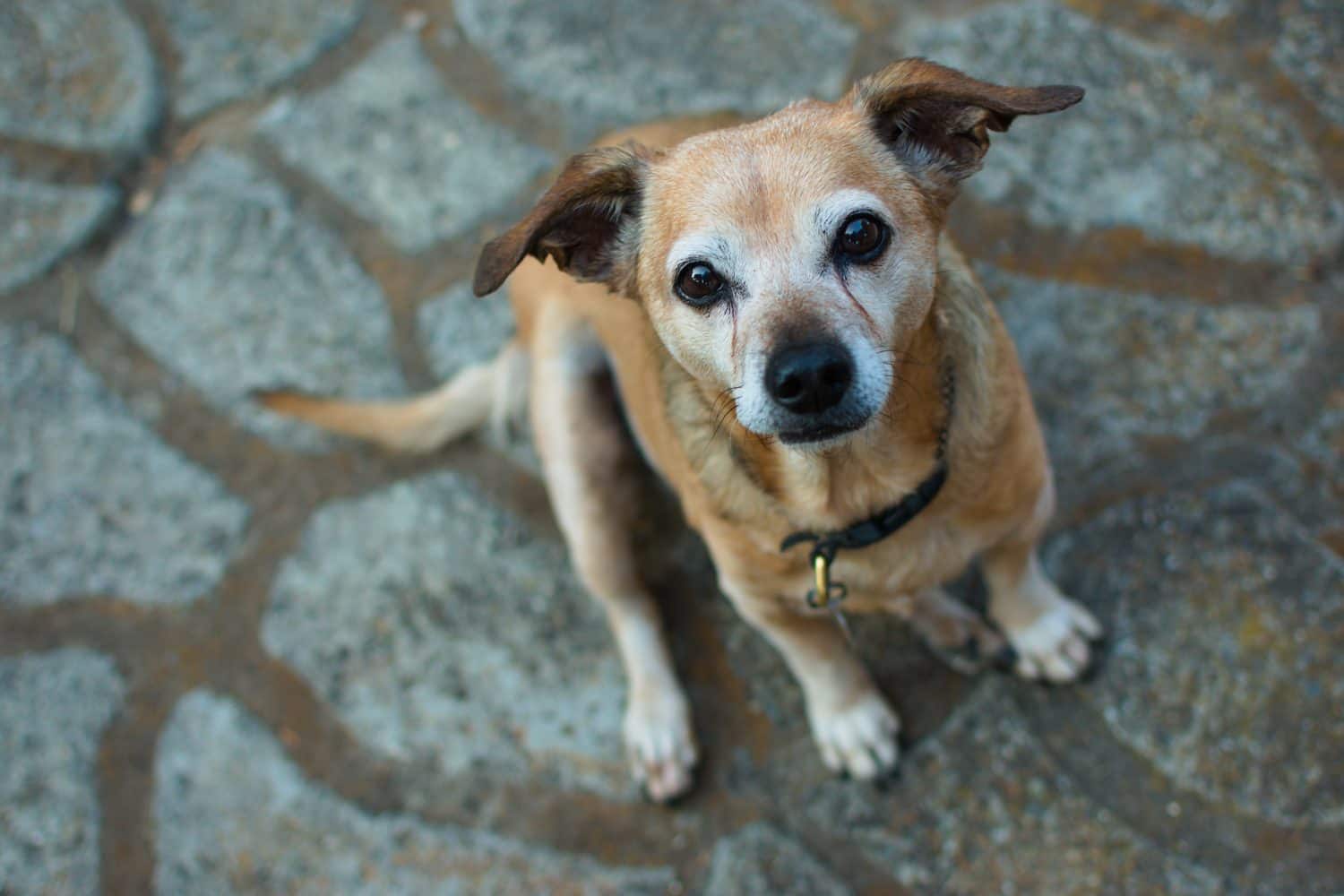
©Imasillypirate/Shutterstock.com
Chiweenies have a little stubborn streak, so patience is key with training.
The first cue you may want to teach your Chiweenie is the sit command. This is an important impulse control command that will help to keep them safe. You can introduce this cue as soon as you bring your puppy home. There are four other essential cues to teach your Chiweenie, according to the AKC.
- Come — Your Chiweenie should be able to switch gears and come to you if they’re headed into an unsafe situation.
- Heel — You’ll want to start walking your puppy right away. Teaching them to heel ensures they’ll learn to loose-leash walk without pulling on you.
- Down — Whether you’re teaching your puppy to lie down to help them relax or keep them in a safe position, the down command is another safety cue.
- Stay — Once your pup learns the stay command, you’ll be able to expand their environment without fear of running into potential danger.
When Will My Chiweenie Calm Down?
It’s natural for puppies of any breed to have lots of energy, and the Chiweenie puppy is no exception. Fortunately, being a small breed dog, Chiweenies settle down more quickly than larger dogs. Still, for many of these puppies, it takes about a year until owners see visible signs of their calming down.
Giving your Chiweenie puppy plenty of exercise is vital to helping them release some of their energy. Daily walks, playing with them in the yard, and training them commands can all help tire them out.
Pictures of Chiweenie Puppies
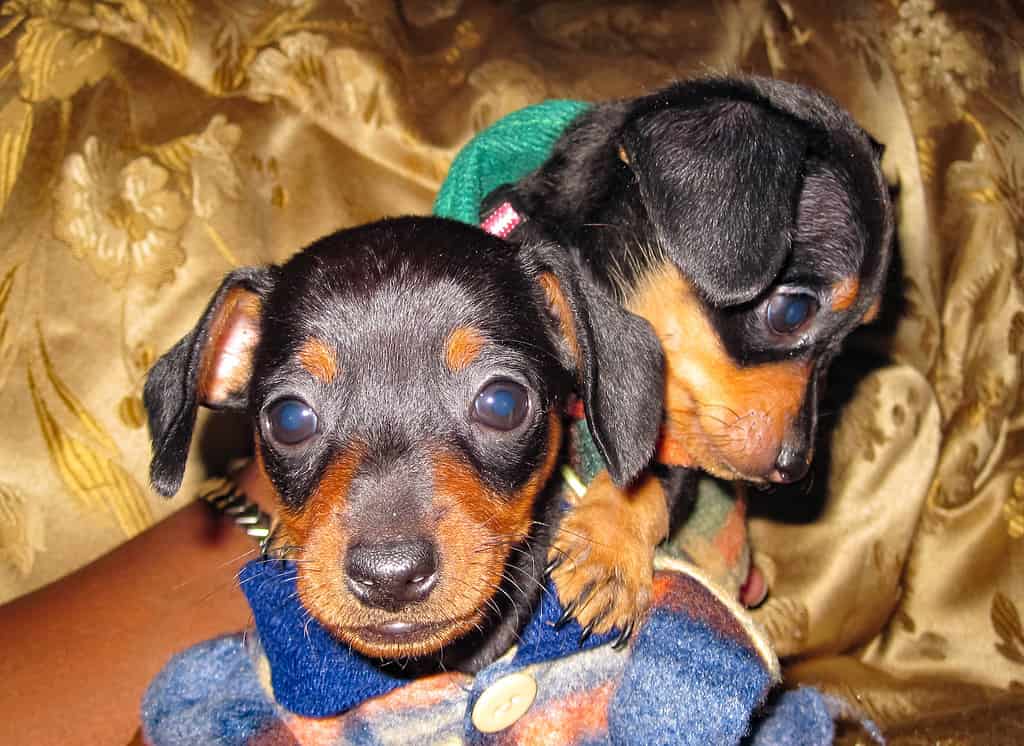
Chiweenie puppies may look more doxie-like, more chihuahua-like, or they may be a combination of both.
©Orvlyn/iStock via Getty Images
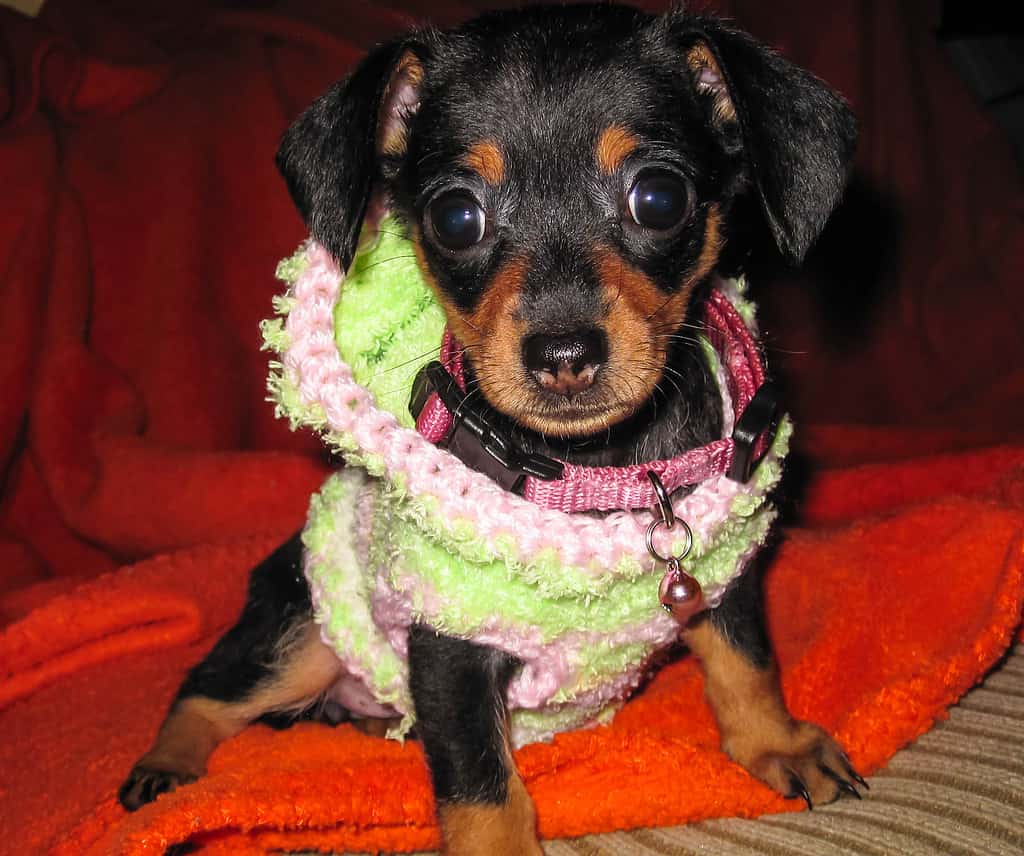
Chiweenie puppies are adorable little dogs that make great pets for first-time owners.
©Orvlyn/iStock via Getty Images

These little cuties come in a variety of colors.
©Anna Hoychuk/Shutterstock.com
Pictures of Chiweenies at 3 to 6 Months

The Chiweenie comes in both a long and short coat variety, just as their dachshund and
chihuahua
parents.
©Marissa LeFever/Shutterstock.com

A Chiweenie’s eye colors can vary from brown to blue to green.
©Hannah Carl/Shutterstock.com
Pictures of Fully Grown Chiweenies
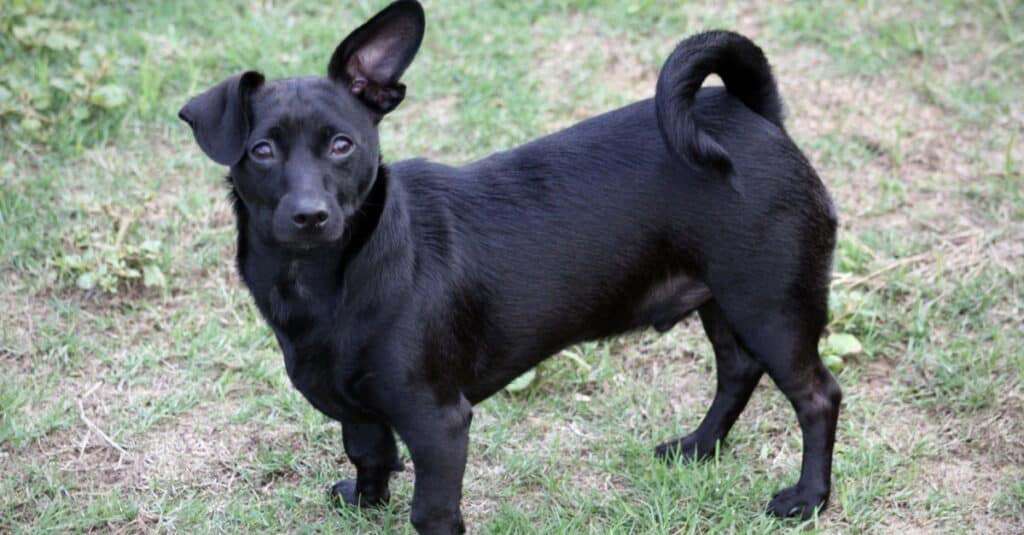
The most common coat colors for this breed are black, fawn, white, and brown.
©Caley Ballard/Shutterstock.com
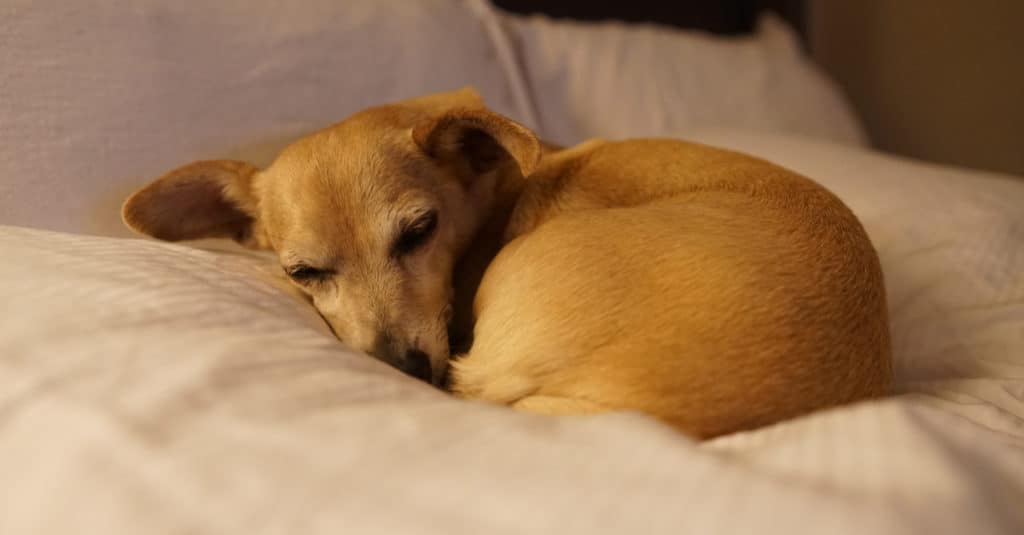
This cross-breed dog can be very easygoing.
©Michael Barajas/Shutterstock.com
Ready to discover the top 10 cutest dog breeds in the entire world?
How about the fastest dogs, the largest dogs and those that are -- quite frankly -- just the kindest dogs on the planet? Each day, AZ Animals sends out lists just like this to our thousands of email subscribers. And the best part? It's FREE. Join today by entering your email below.
Thank you for reading! Have some feedback for us? Contact the AZ Animals editorial team.

